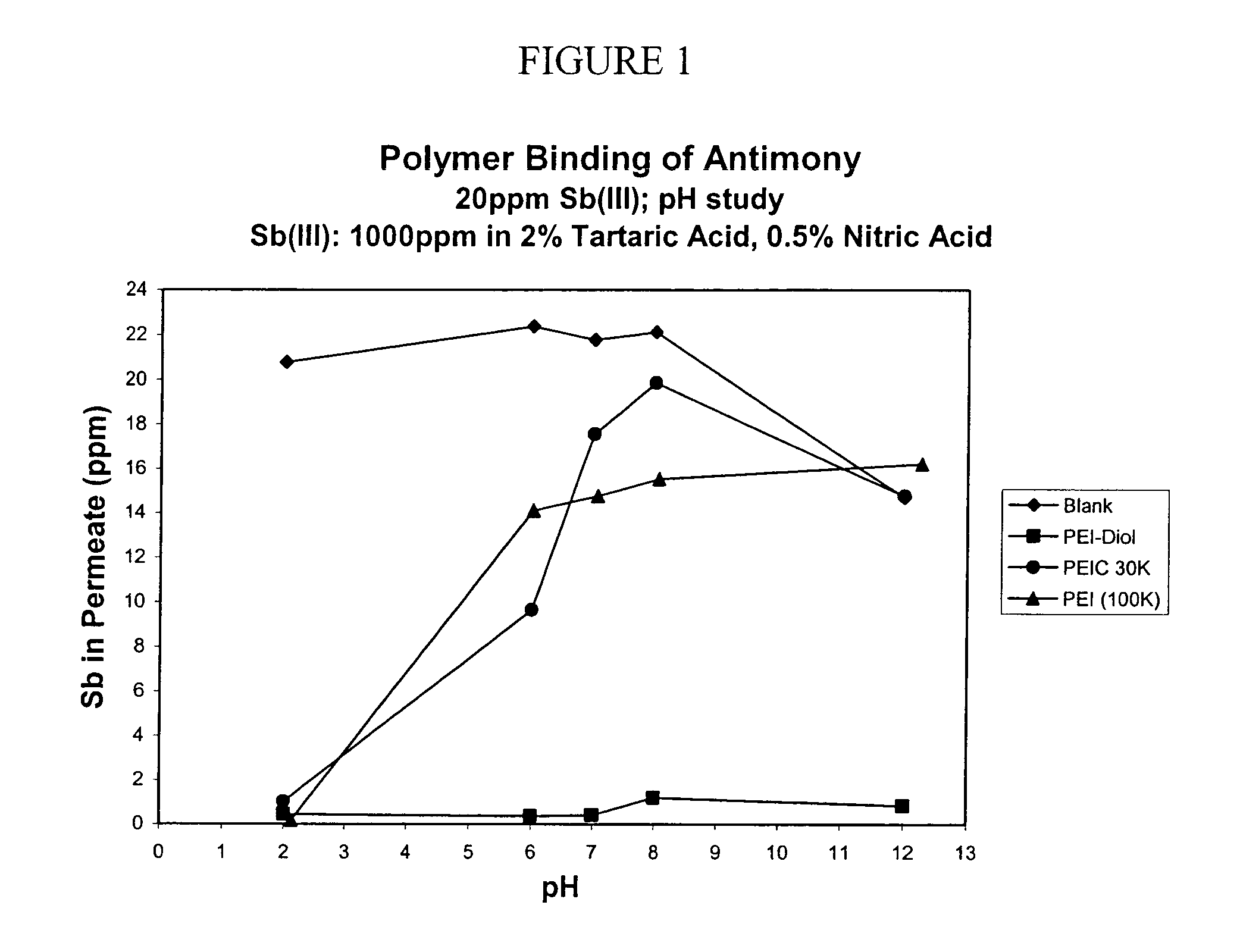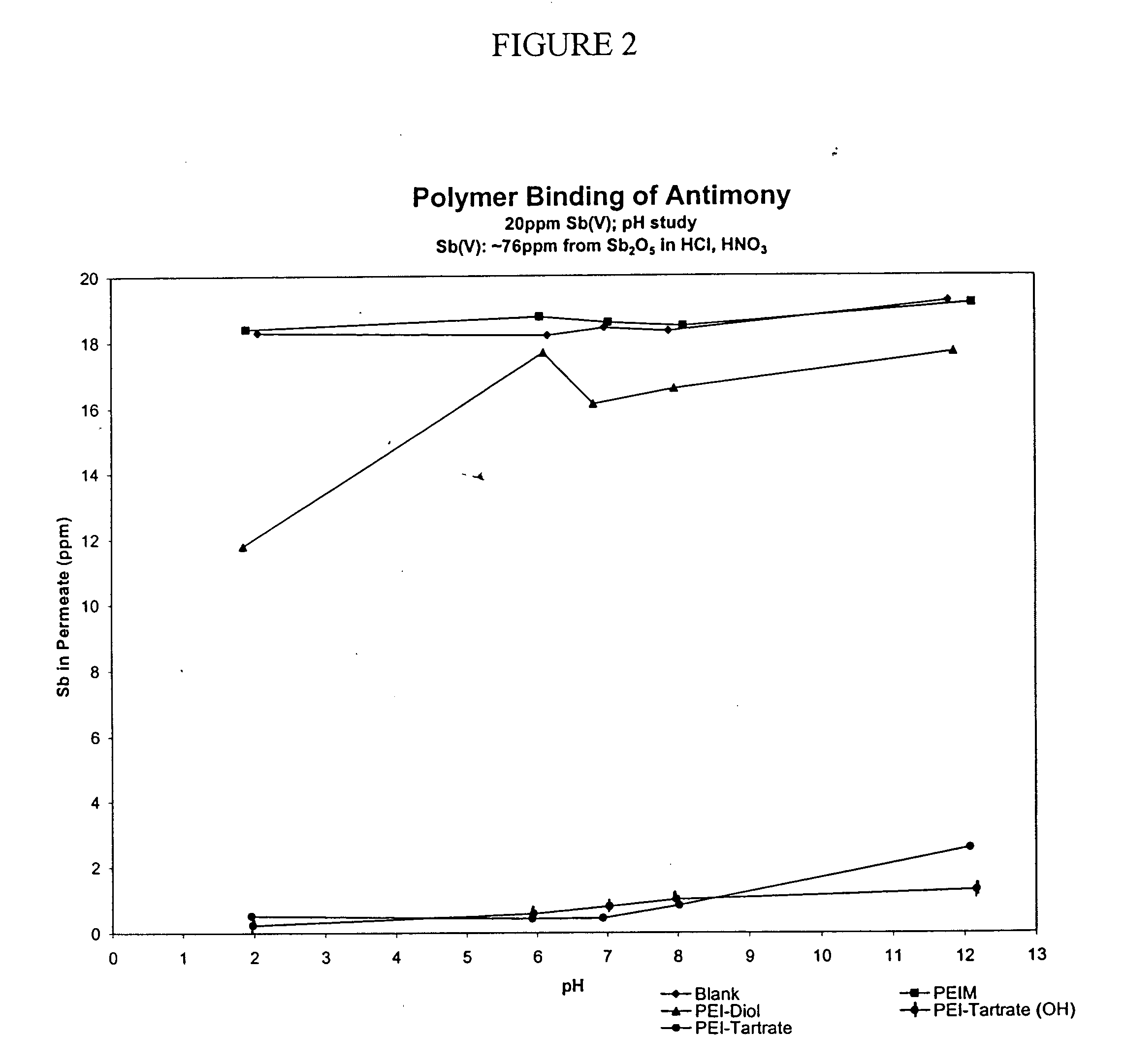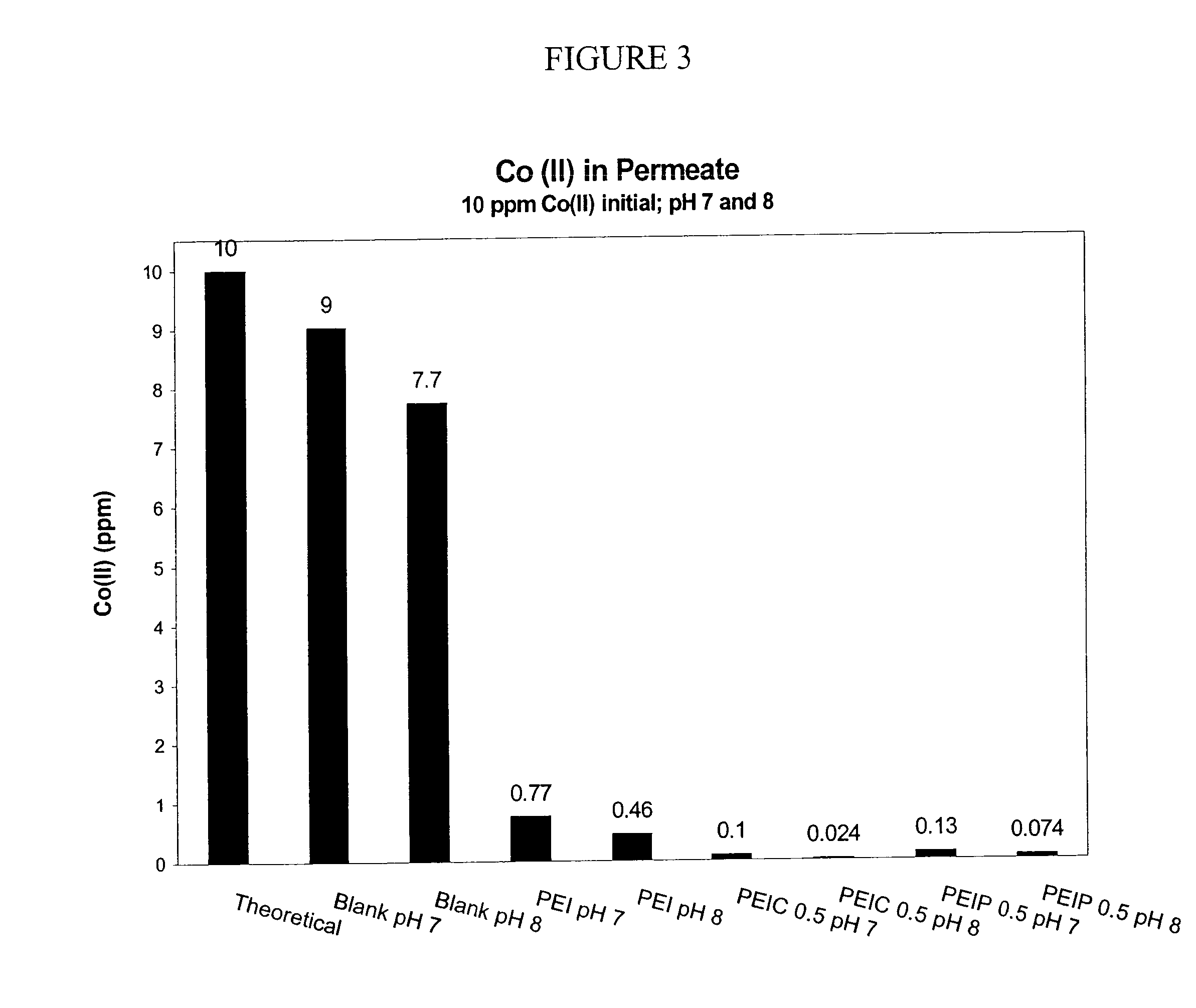Functionalized polymers for binding to solutes in aqueous solutions
a functionalized polymer and solute technology, applied in the field of synthetic watersoluble polymers, can solve the problems of contamination of ground water, contaminated food water, contamination of rivers, lakes, etc., and affect the taste and quality of culinary water,
- Summary
- Abstract
- Description
- Claims
- Application Information
AI Technical Summary
Benefits of technology
Problems solved by technology
Method used
Image
Examples
examples
The following examples are given to illustrate various embodiments that have been made within the scope of the present invention. The following examples are neither comprehensive nor exhaustive of the many types of embodiments that can be prepared in accordance with the present invention.
example a
Synthesis of PEI-Tartrate
A number of polymers may be created by directly attaching a tartrate group to PEI. For example Diethyl-L-tartrate (9.02 g, 43.75 mM) was added to a solution of pre-purified PEI (6.3 g, 43.75 mM) in 150 mL EtOH. The reaction was heated to reflux and stirred over night (15 hours). The mixture was cooled to room temperature, filtered, and the solvent was removed by rotary-evaporation. The crude product was dissolved in water and purified by diafiltration using MWCO>30,000 membrane. After removal of water, the desired polymer (9.5 g) was obtained. The FTIR spectrum shows one stretch at 1654 cm−1, indicating that the starting ester (C═O, 1734 cm−1) was consumed.
When tartrate is covalently linked to the polymeric backbone of PEI at least three possible configurations are possible. The ester carboxylate of the tartrate may form a cyclic tartrateimide, an open amide-monoester, or may form a diamide attached to two different nitrogen sites within the polymeric ba...
example b
Synthesis of PEI-Diol
PEI-Diol can be readily synthesized. For the preparation of PEI-Diol in a 1:1 PEI / reactant ratio, 2.0 g (0.042 mol) of 90:10 PEI:H2O solution and 3.93 g (0.042 mol) of epichlorohydrin were each dissolved in 50 ml of anhydrous methanol and placed in separated syringes fitted with 8 in. needles. The two syringes were mounted onto a SAGE Syringe Pump Model 351 that allowed the simultaneous addition of the PEI and epichlorohydrin in equal concentrations to the reaction flask. The reagents were added drop-wise at a rate of 1 mL / min into 20 mL1 of anhydrous MeOH under the protection of Argon with rapid stirring. After the addition was complete, the clear, colorless solution was allowed to stir for 24 hours at ambient temperature under Argon. Then, 42, mL (0.042) moles of a 1.0 M standardized KOH / MeOH solution was added drop-wise and the reaction brought up to reflux. After refluxing for several hours, the KCl was removed by filtration and the MeOH removed under vacu...
PUM
| Property | Measurement | Unit |
|---|---|---|
| Fraction | aaaaa | aaaaa |
| Fraction | aaaaa | aaaaa |
| Fraction | aaaaa | aaaaa |
Abstract
Description
Claims
Application Information
 Login to View More
Login to View More - R&D
- Intellectual Property
- Life Sciences
- Materials
- Tech Scout
- Unparalleled Data Quality
- Higher Quality Content
- 60% Fewer Hallucinations
Browse by: Latest US Patents, China's latest patents, Technical Efficacy Thesaurus, Application Domain, Technology Topic, Popular Technical Reports.
© 2025 PatSnap. All rights reserved.Legal|Privacy policy|Modern Slavery Act Transparency Statement|Sitemap|About US| Contact US: help@patsnap.com



